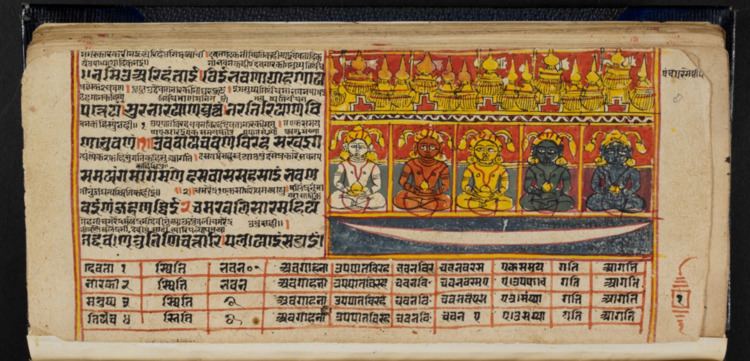 | ||
The Pañca-Parameṣṭhi (Sanskrit for "five supreme beings") in Jainism are a fivefold hierarchy of religious authorities worthy of veneration.
Contents
Overview
The five supreme beings are:
- Arhat: The awakened souls who have attained keval gyan are considered as Arihant. The 24 Tirthankaraas or Jinas, the legendary founding figures of Jainism in the present time cycle are Arihants. All Tirthankaras are Arihants but all Arihants are not Thirthankars.
- Siddha (Ashiri): The souls which have been liberated from the birth and death cycle.
- Acarya
- Upadhyaya ("Preceptors")
- Muni or Jain monks
The five initials, viz. A+A+A+U+M are taken as forming the Aum syllable.
Five supreme beings
Dravyasaṃgraha, a major Jain text, succinctly characterizes the five Supreme Beings (Pañca-Parameṣṭhi).
- Definition of the World Teacher (Arhat) - verse 50.
- Definition of the liberated souls (Siddha) - verses 51.
- Definition of the Chief Preceptor (Acarya) - verse 52.
- Definition of the Preceptor (Upadhyaya) - verse 53.
- Definition of the Ascetic (Sadhu) - verse 54.
Arhat
Having destroyed the four inimical varieties of karmas (ghātiyā karmas), possessed of infinite faith, happiness, knowledge and power, and housed in most auspicious body (paramaudārika śarīra), that pure soul of the World Teacher (Arhat) should be meditated on.
References
Pañca-Parameṣṭhi Wikipedia(Text) CC BY-SA
